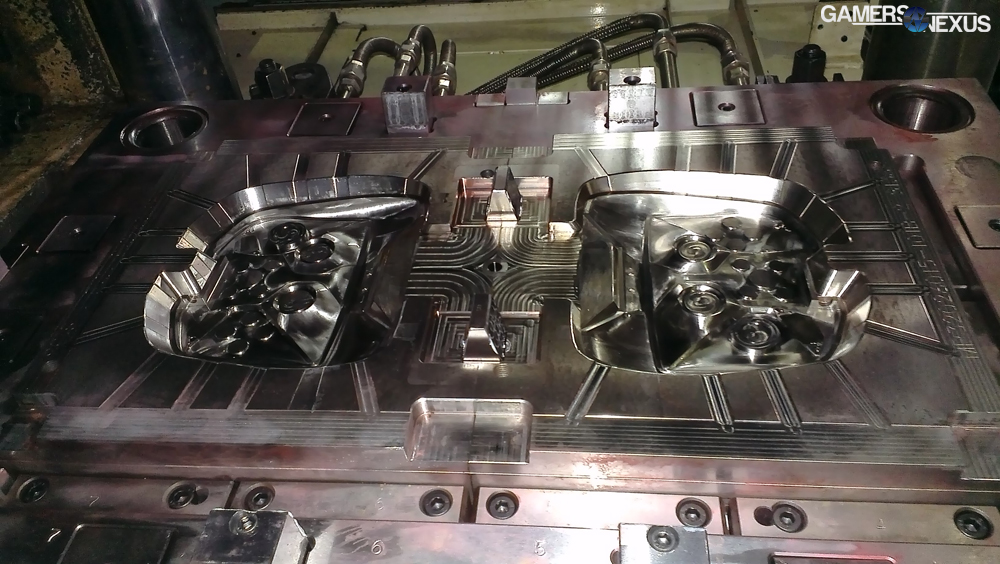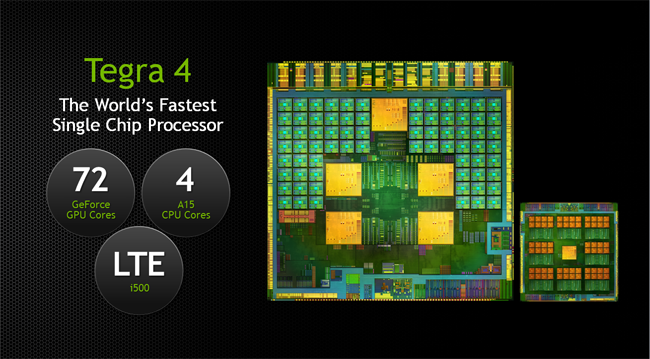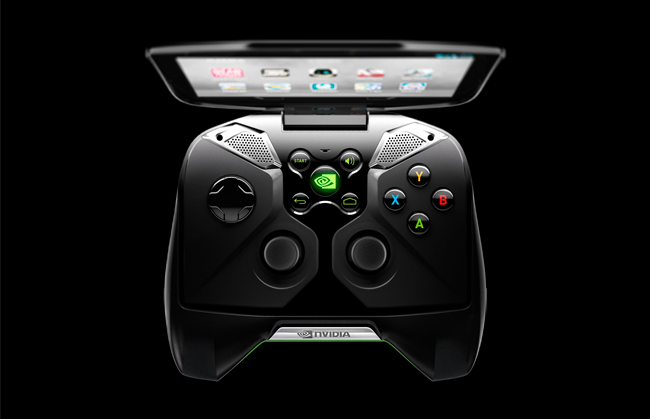While at GTC 2014, nVidia passed out a free SHIELD to every attendee willing to pick up the 4-pound box. After figuring out how to get the thing home, I've finally had some hands-on time with the SHIELD in the comfort of a home (read: not pressured by PR from all sides on a convention floor). I'm not ready to write a full review just yet; actually, I haven't tested the remote rendering functionality yet -- the biggest feature -- but I've had some fun with Android games.
 The injection mold for the SHIELD. Learn more about how it's made here.
The injection mold for the SHIELD. Learn more about how it's made here.
What is the nVidia Shield?
I first wrote about nVidia's SHIELD way back at CES 2013, at which point we erroneously—along with most other media outlets—called it a "handheld console." NVidia was quick to email editors and clarify that the device is, in fact, not a console - but a standalone Android device which is capable of exporting render and compute functionality to a GTX-equipped system. The Shield effectively acts as a screen and a controller, but you're able to perform all the draw calls and computational workload on a GTX-equipped rig, push that to the SHIELD, and even export that to a TV or other display. Now, my own initial skepticism probably said the same thing you're saying: "Wait. Why don't I just play on my computer if it's already rendering it?"
There are definitely times it's nice to be able to move around to other rooms; if you've got a big TV, this turns your system into somewhat of a portable render rig while the Shield acts as a liaison between the TV and PC. This stated, the Shield is still equipped with a fairly powerful TEGRA 4 processor, which uses a 4-core ARM A15 CPU and a 72-core TEGRA 4 GPU component; 72 cores might not sound like a lot when matched against, say, a Titan Z's 5760 CUDA cores and 2xGK110 GPUs, but it's a damn lot compared to 4-core GPUs found on most phones.
And this is a topic for another article, but I think we'll all be seeing TEGRA a lot more in the future; I have a strong suspicion that it will slowly creep its way up the chain, moving from mobile to higher-end devices. NVidia can't integrate its NVLink with Intel, something I'll soon explain, and AMD obviously has no interest in enabling such an interface, so my thought is that TEGRA could be a potential host; the existing host is IBM's Power solution, but that doesn't exist outside of
Regardless, back to the Shield.
Initial Impressions: NVidia Wants to Enforce "Quality" From the Get-Go
With a heavy box and heavy item inside of it, it's clear that nVidia is attempting to convey quality by sheer branding, packaging, and heftiness of the product. The controller feels a bit awkward to hold at first. Its triggers aren't curved enough and the 5" 1280x720 screen added to the weight of the rear of the device sort of pulls it downward, but I did find myself getting used to it with time. I do wish the triggers were more curved, though; that's something that Microsoft got right with the Xbox controllers.
Turning on the Shield, I was initially impressed with its high-volume speakers. The drivers are able to produce a bit of a boom thanks to the large body size of the unit, which allows sound to reverberate within the shell to create the added bass. The screen's 720p resolution is adequate for the type of gaming you'd be doing on the device and the glass is clear, bright, and has great color output. Controls are a bit awkwardly-positioned, but overall give the user a good range of options without encumbering them with a touch-only display, as most Android devices would do. The Shield's display does allow for touch input, but it isn't required for most applications or games.
All Android games will work on the Shield. Some developers have been "encouraged" by nVidia to produce Shield-specific control schemes or games; the fact is that the Shield can output far higher-fidelity graphics than most other consumer Android devices on the market, so taking advantage of that extra compute power means exclusive titles are required to some degree.
Overall, I've had fun with the controller so far. I can't stand playing games on my phone; using your display as your input device is horridly encumbering, which is only worsened when the gyroscope is deployed as additional input, since you're not rotating your display and putting fingers all over it. The Shield solves these issues by moving input to a more traditional controller.
Of course, the Shield is also pretty damn expensive -- it's a good price for the hardware, but that doesn't make it easier to justify when the same amount of money can be put toward a GTX 760. It's definitely a fun toy. Once I've properly tested Kepler's ability to remotely render and transmit game streams to the Shield (without detrimental latency, in theory), I'll get a full write-up and review online. We've barely even scratched the surface at this point. Still, I wanted to get some initial thoughts online for those of you wondering how I've liked it thus far.
- Steve "Lelldorianx" Burke.

